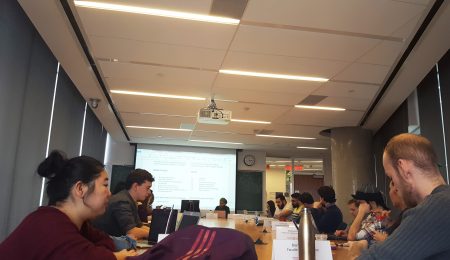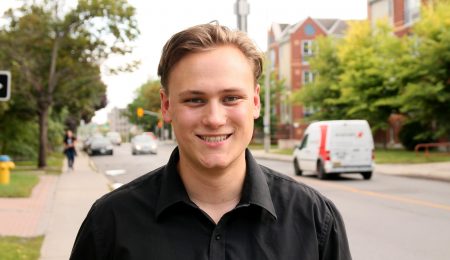Barriers to post-secondary education are more than financial
ACCESS TO POST-SECONDARY education (PSE) is important. A majority of Canadians believe a college or university degree is necessary to get a good job, and given the reality of our knowledge-based economy, that perception is correct.
The future—and success—of our economy depends on a highly educated workforce, and this requires more participation in PSE by the population as a whole, particularly from those of a lower socio-economic status that have been traditionally underrepresented in colleges and universities.
And so campaigns like Education is a Right are born and a National Day of Action is organized. Focusing extensively on reducing tuition fees, dropping student debt, and increasing education funding, the Canadian Federation of Student (CFS) campaign highlights financial barriers to education. As the front page of the campaign’s website says, “Students should have access to an affordable post-secondary education.”
This student-run organization isn’t the only group focusing on finances. Just this month, the Liberal Party of Ontario implemented their 30 per cent rebate on tuition fees for eligible students with the intention of relieving some of the financial burdens faced by students. And how often are topics like skyrocketing fees, rising debt, and cuts to education funding covered by the media? Financial barriers are the most visible when it comes to public discourse on access to PSE.
But when it comes to this undeniably important issue, the CFS, politicians, policy makers, and students themselves appear to be unaware that financial factors are not the only barrier to post-secondary institutions—in fact, they are not even the most important ones.
Research done by groups such as the University of Ottawa’s Education Policy Research Initiative and Higher Education Strategy Associates, as well as that of the Measuring the Effectiveness of Student Aid (MESA) project, have shown whether high-school graduates make it to university or not is heavily influenced by cultural factors—early-life experiences that shape one’s attitude toward PSE.
Aspirations toward and preparation for university begin at an early age, so family background and early experiences in school play a crucial role in the decision to go to a post-secondary institution. In a study published in 2010, MESA found low-income students whose parents never attended university make their decision to apply later, are less likely to have parents who saved for their education, and underperform academically when compared to students with university-educated parents.
Success in elementary or high school can also affect a student’s attitude toward pursuing further education. Performance in classes or on standardized tests can shape a student’s perception of his or her ability to succeed in school, while being engaged in the classroom and satisfied with the education experience can determine their desire to stay in the system. Oftentimes, financial considerations don’t enter a student’s decision to apply to university until their final year of high school.
Another study by MESA also found a relationship between visible minorities and immigrant populations and attitudes toward PSE. Researchers found that students of a visible minority born in and outside of Canada expressed more concern over disappointing their parents if they were to drop out of school when compared to their classmates of a non-visible minority. These students also devote more hours per week to their studies, and these factors contribute to the accessibility to and persistence of these populations in the PSE system—regardless of cost.
Gender appears to pose another barrier to PSE, specifically access to university. In 2003, 38.8 per cent of 19-year-old women had attended university versus 25.7 per cent of their male counterparts. Factors such as receiving higher grades and test scores in high school, better study habits, and higher parental expectations have positively impacted women’s decision to go to school, but these results beg the question: Why are the boys being left behind in elementary and high school?
The Education is a Right campaign has made increased access for Aboriginal Canadians a priority—a good first step as this segment of the population faces some of the highest barriers to education in the country—but the organizers shouldn’t stop there. Discourse on accessibility to post-secondary education can be broadened even further.
For access to post-secondary education to become a reality for all Canadians who possess the desire and academic merit to attend, we need to get serious about what is preventing that from happening. Although the CFS-led campaign has a constantly changing name, its mission statement needs to evolve and expand before it will have any meaningful impact on accessibility to PSE.
editor@thefulcrum.ca | (613) 562-5260




